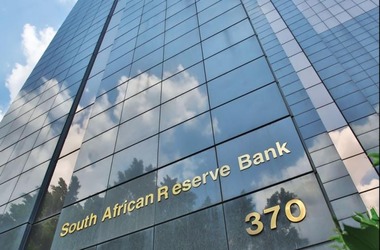 Central Banking, a website dedicated to news about Central Banks, and financial developments in general, has reported that South African Reserve Bank (SARB) has won the ‘Best Distributed Ledger Initiative’ prize for Khokha, a distributed ledger project, from the Central Banking FinTech RegTech Global Awards 2018 at a gala dinner in Singapore.
Central Banking, a website dedicated to news about Central Banks, and financial developments in general, has reported that South African Reserve Bank (SARB) has won the ‘Best Distributed Ledger Initiative’ prize for Khokha, a distributed ledger project, from the Central Banking FinTech RegTech Global Awards 2018 at a gala dinner in Singapore.
Earlier this year, Lesetja Kganyago, the Reserve Bank Governor, launched the Project Khokha soon after completing a trial for managing bulk payments between two or more settlement banks, using the distributed ledger technology.
SARB underlined the importance of winning the award by saying that it gave recognition to the Project Khokha for its innovations in the financial industry, specifically, in the regulatory, banking and supervisory environment.
Regulatory departments are still lagging behind the big changes brought about by the distributed ledger technology. However, recently, many of the regulatory organizations have taken steps to close the gap by reworking the legal framework such that it doesn’t hamper advancements related to the blockchain technology.
Project “Khokha”
The project was launched with an aim to enhance performance, privacy, resilience, and scalability of a blockchain-based solution when put under stress test, with conditions resembling the real-world banking sector. In less than three months, the DLT solution was developed. Furthermore, the network was built on J.P. Morgan’s enterprise blockchain named Quorum.
The blockchain-based platform created under the project Khokha will be used between participating banks. Ultimately, the goal is to deliver a bulk payment processing system, which would be supported by central bank deposits. This allows participating banks to pledge, redeem and track balances of the tokenized domestic currency (South African rand) in the ledger. A node has to be setup by each of the participating bank. Decentralization is achieved that way.
Performance of the blockchain network
The distributed ledger technology was able to pass the scalability test and achieve the criteria for RTGS (real-time gross settlement). Security systems were also put under a series of tests. Likewise, the network’s capacity for trading was also tested. The central bank had set a benchmark of one second for 95% of the transactions to get completed and the rest within two second. The platform was able to pass the test.
As it can be understood, the platform was able to pass all the stress tests through flying colors. The transactions were completed within 2 seconds. SARB was able to monitor the entire network of distributed nodes without any difficulty.

 United States
United States United Kingdom
United Kingdom















